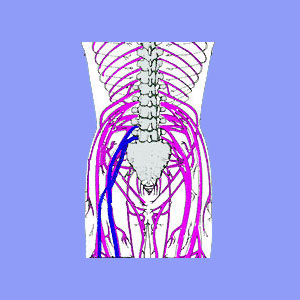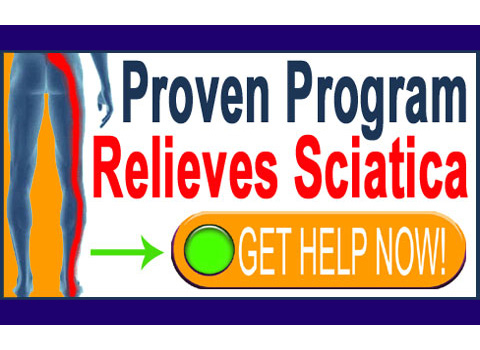
Sciatic nerve treatment is a general term for any therapy modality which acts to resolve sciatica pain or at least relieve the effects of the devastating symptoms upon the patient’s life. There are 2 primary forms of sciatica treatment available: options which work to address and resolve the underlying source of pain and and options which merely function as symptomatic treatment.
This article details the goals of different types of sciatica care practices and helps patients to decide on the best treatment for their specific requirements.
Symptomatic Sciatic Nerve Treatment
Symptomatic treatment is never the best option, since it basically goes against the laws of good medical science. Doctors are taught to cure the cause of a condition as their primary goal and only work to relieve the symptoms in the face of an incurable disorder. Back and leg pain syndromes common to most sciatica patients are certainly not generally classified as incurable conditions.
It is ironic, however, that 95% of all sciatica treatments violate this basic medical philosophy, since they mostly qualify as purely symptomatic therapies. Patients can stay in treatment for years without any hope for finding a true cure. The saddest part is that most patients are not even aware of this fact and are usually puzzled as to why they still have pain when they have already been in medical care for so long.
Curative Sciatica Treatment
Sciatica treatments which seek to discover and resolve the underlying causes of sciatic nerve pain are considered curative modalities, rather than symptomatic therapies. There are very few of these treatments in existence and the most commonly utilized is fraught with potential risks and dangers:
Surgery is by far the most common therapy option which addresses the suspected causative condition behind the sciatic symptoms. Surgery should only be used as a last resort and should be considered very carefully, since it might do far more damage than good in many patients. If surgery is needed, patients should spend adequate time in both choosing a surgeon, as well as investigating their procedural options.
Spinal decompression is a less risky treatment which might offer good results and possibly enact lasting sciatica relief. Decompression can not be used to treat all types of sciatica, but is particularly effective for patients whose pain has been blamed on a herniated disc or degenerative disc disease.
Knowledge therapy is a non-medical, patient controlled approach to healthcare which has offered millions of patients a real cure for some varieties of mindbody back pain. This technique is highly recommended, since it is risk-free and also free in cost. However, this approach will not work for every patient.
Sciatic Nerve Treatment Recommendations
Finding the best method of curing sciatica can be a daunting task. Most patients have a difficult time recognizing the objective facts about sciatica, since they are frightened and often confused by the entire treatment process. In these cases, the patient is generally led blindly into a series of therapies which are likely to fail, bringing the patient deeper and deeper into a living hell with little hope for recovery.
My advice is to always take charge of your own destiny and become an active participant in your own treatment program. Not doing so can have dire consequences. Ask questions. Expect answers. Do not settle for any less.
Just by following this simple advice and doing lots of independent research on sciatica, you have a far better chance of finding your way to the light at the end of that long dark tunnel, as opposed to venturing ever deeper into the abyss of chronic pain.





